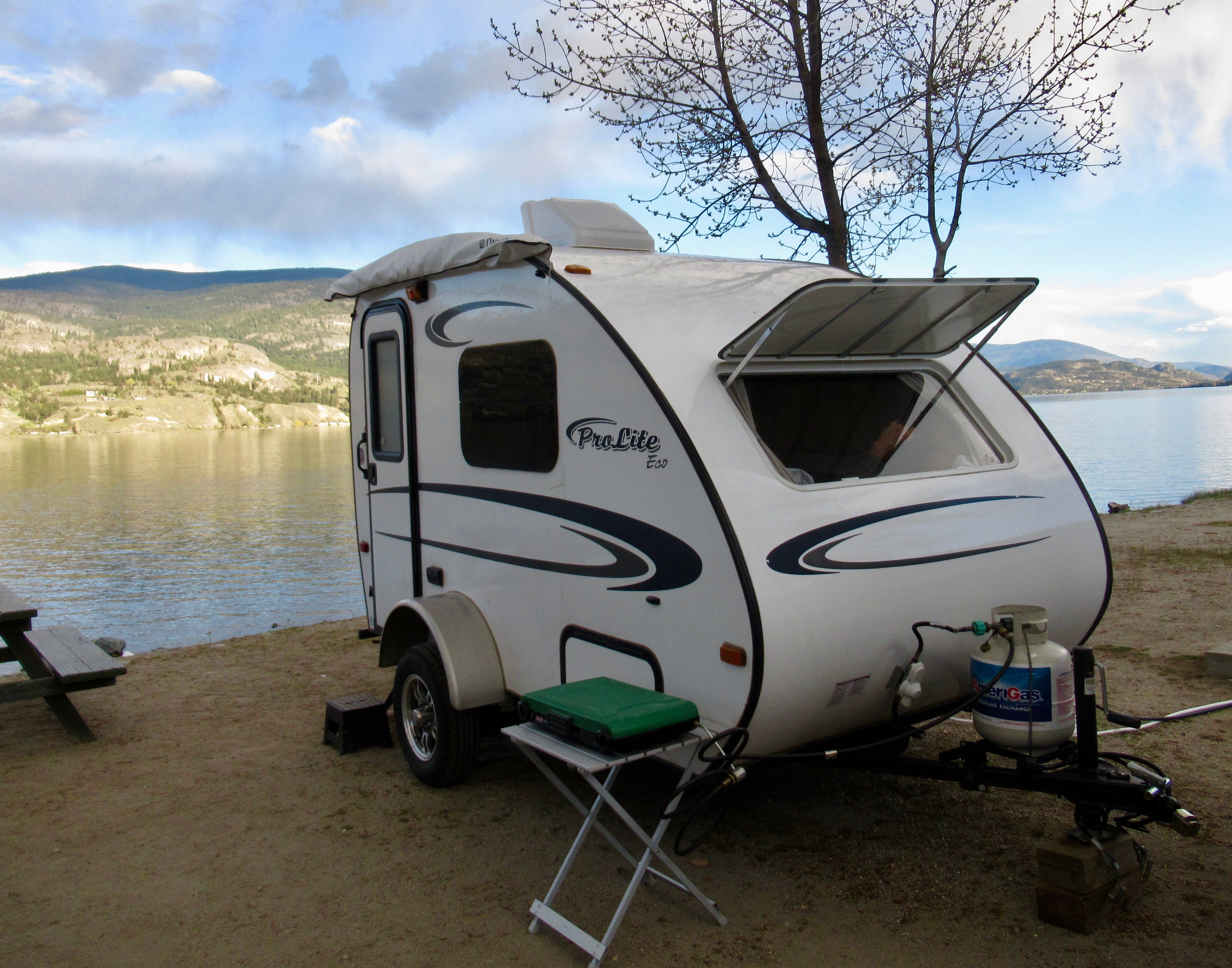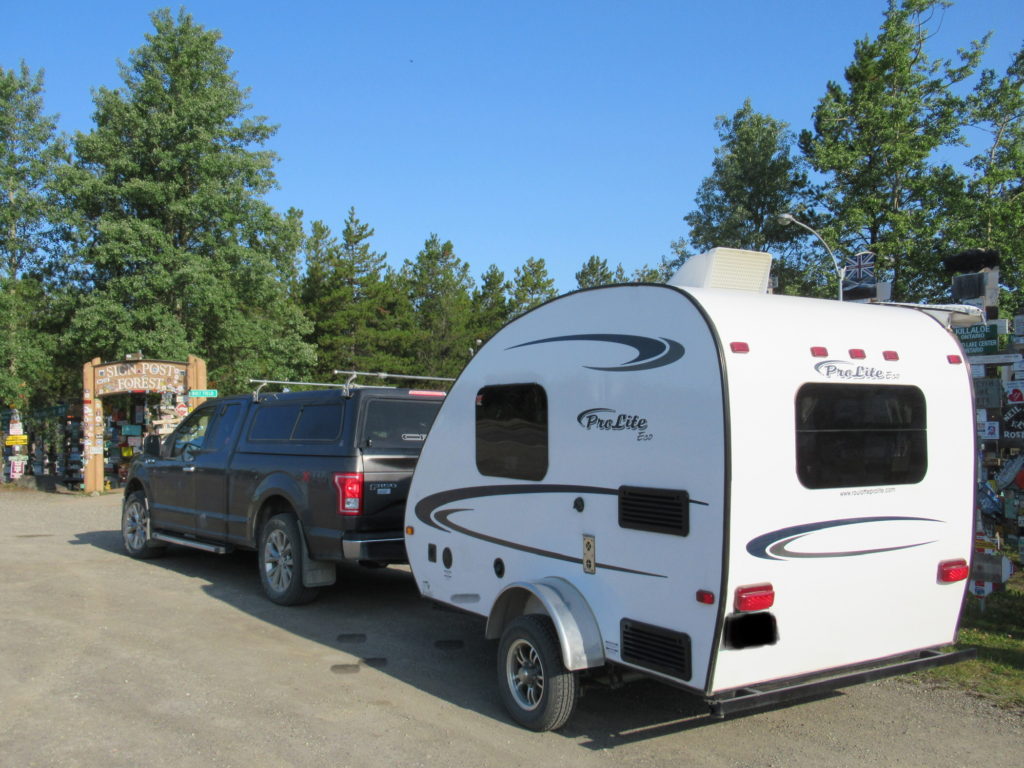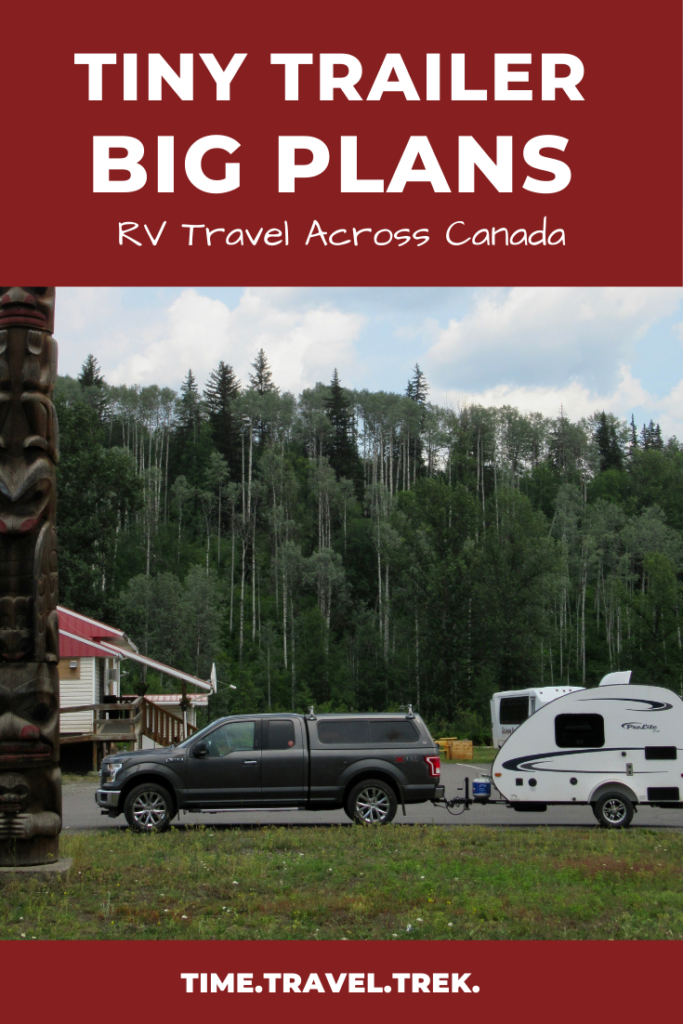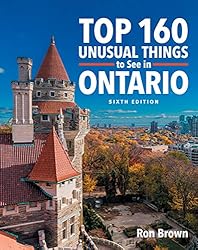We have a tiny trailer, big plans. Now, as you may know, the thought of planning an RV trip across Canada is daunting. There are so many factors to consider. Where do you begin? How do you plan a route? How much time do you need? Lucky for you, we’re going to share our planning tips and tricks as we go through the process. Read on!
Disclosure: This post contains affiliate links. If you buy something from one of our affiliates, we receive a small commission at no extra charge to you. Thanks for helping to keep our blog up and running!

Table of Contents
Tiny trailer, Big Plans
We’ve gone through several different vehicle combinations searching for the perfect small RV over the years. The travel trailer we have now is a tiny step up from a tear drop trailer. It’s a lightweight little guy that is incredibly easy to tow and goes anywhere. It has a comfortable sleeping space, well-designed layout and – with the truck – holds all the gear we need. And we’re going to put this tiny trailer to the ultimate test with big plans to head across Canada this summer – or whenever Covid-19 settles down enough to allow it.
If you don’t have an RV – tiny or otherwise – you might consider renting. Go RVing has a great list of places to rent RVs across Canada. It’s a good place to start. Be sure to read the sections on cost, rental tips and FAQs.
How to Start Planning Your Cross-Country RV Trip
There are so many factors involved in planning a cross-country RV trip – from time to destinations to types of activities you seek along the way. But there is a way to start laying a framework for the adventure. We may have a tiny trailer, but we have big plans. It’s going to take some work to figure out where we want to go, what we want to see and do, how long we will need to get from A to B – and all of the other logistics that come with a RV trip across Canada. Join us on the journey.
Where Will Your Trip Start and What is Your Ultimate End Destination?
The first step in planning a big trip is knowing where you will start and what your goal destination will be. We travel through British Columbia regularly to explore as well as visit friends and family. We’ve made several trips to the Yukon over the years and now have family living in the territory – meaning stay tuned for more RV adventures up north over the next few years! The Northwest Territories is on our list for a separate trip in the future.
As a result, we decided to skip the Yukon, NWT and BC this time ’round and start our cross-Canada RV trip from our home base in Alberta. We’ll head east through Saskatchewan and towards the Maritimes. Our dream goal is Newfoundland and Labrador on this trip, but time may be a limiting factor.
Did You Know? Canada is 5,514 kilometres across from Cape Spear, Newfoundland and Labrador, in the east to the Yukon and Alaska border in the west. It stretches 4,634 kilometres from Cape Columbia on Ellesmere Island in the north to Middle Island in Lake Erie, Ontario in the south. The country is so large that there are actually six different time zones!

How Much Time Do You Have?
Step two is knowing how much time you have available for the journey. Do you have one month, six weeks, two months or more? The amount of time you have to spend on the road is often based on a budget. Be prepared to draft a rough list of costs for the trip to see if your timeline is feasible.
Our budget includes gas, campground fees and entrance fees for historic sites, attractions and parks. Because we buy food whether we are at home or on the road, we don’t include this cost. Also, we haven’t set our time in stone yet, but we are considering two to three months of travel.
How far can you travel by RV in a day?
Step three is knowing how far you can or want to travel in a day. This varies for everyone. When we have a destination in mind, we’ve been known to pull the trailer – remember it’s tiny and easy to tow – for 12 hours straight through.
I’ve often heard from other RVers that 500 kilometres is a long enough travel day. Again, it’s up to you. But here’s a tip – be realistic. When you are planning your time, don’t be overly ambitious. After all, the goal is to enjoy – not endure – the trip!
To get an idea of how long the drive will take, start by roughly calculating your total distance. How far is your trip point A to B and back again? Divide the total distance by number of kilometres you can – or want to – travel in a day. That’s how many days you will need to just drive the route. It doesn’t account for down days and exploration time.
Gather Info!
Step four is to get a good map of Canada. Use it to help you start researching and making lists of places of interest and cool things to do. Pick up guidebooks for Canada and each particular province or region. You can buy them or borrow from library for free to get started. Talk to friends about where they’ve been and ask if they have suggestions for must-sees or must-dos for a Canadian RV trip. Scan the web and visit the websites of each provincial and territorial tourism entity:
Spectacular Northwest Territories
Newfoundland and Labrador Tourism
What Are Your Must-See Destinations Along the Way?
Keep a list of what you’d really like to see during your travels. Note if they will take you off your main route. If so, how much extra drive time will they require? Approximate how much time will each site take to visit (1 hr, 2 hrs, ½ day, full day…). Tally up the time. I’m a history buff. National historic sites, historic small towns, archaeological sites and museums will all be drawing cards as we work up our itinerary.
What Are Your Must-Do Activities Along the Way?
Again, start keeping a list. Do you have to stop off for a particular festival, visit an amusement park, attend a concert – you get the picture. Are they far off the main route? How much extra drive time will they require? Will it take 1 hr, 2 hrs, ½ day or a full day or more to do?
We’re active travelers. This could be our downfall when it comes to timing because we’re always on the lookout for places to paddle, trails to bike and routes to hike. Stay tuned for the list in a future post – it’ll be a good one!
Draft a Rough Itinerary
Once you’ve got a list of your starting point, ideal destination goal, must-sees and must-dos, start mapping your route. This is step five. I like to use a highlighter on a paper map, but apps are good, too. Our standby is Google Maps but do check out Roadtrippers to see if it works for you.
Rough out an itinerary. Keep a tally of time: full driving days, time to get to must-sees and must-dos as well as time spent there. Fine-tune your itinerary according to the length of time you have for this trip by cutting or adding must-sees and must-dos as you go. Remember to add a few spare days for unexpected stops.
Start Booking Campgrounds
Step six is to start booking a few campgrounds. What type of services (if any) do you require? Are you wanting to camp only in National, Provincial or Territorial parks? Is there a limited selection of campground near one or more of your must-sees or must-dos? We’ve created a post packed with links on to where to camp across Canada – check it out! If there are any campgrounds that you simply have to stay in, book months in advance.
Summer is the busiest time for RV travel in Canada. Campgrounds book up fast. Some national parks book up within days of reservation opening. We have a tiny trailer with big plans to go all the way across the country from home base. But we’re open to a wide variety of campsites – from RV parks to national and provincial park to free campsites. We’re willing to go with the flow and have a Plan B… and C and D and… ready to go.
Our Tiny Trailer, Big Plans 6-Step Formula for RV Tripping
1. Decide where your RV trip will start and where it will end to get an idea of distance you will travel.
2. Figure out how much time you have for the journey. Note: this may be based on the budget you have available for the trip.
3. Write down how far you can – or want to – travel in a day. Calculate straight driving days by dividing the total distance by your daily mileage.
4. Start researching places you have to see and things you want to do.
5. Map out your tentative route and create a rough itinerary.
6. Start booking a few campgrounds.
How ‘bout you? Are you planning an RV trip across Canada? Feel free to leave your planning tips in the comments below. Big RV or tiny trailer with big plans – we hope to see you on the road one day soon!
Looking for More Ideas for RV Travel?
Be sure to check out our roundup of RV-related podcasts and YouTube videos in “Looking for Inspiration and Adventure in 2021?”
PIN THIS POST FOR FUTURE REFERENCE!






What make and footage is your trailer? Seems like it is what we are looking for. I would urge you to travel to Newfoundland, you will not regret it. Absolutely beautiful and the scenery is magnificent. There is so much to see that you could really just spend all the vacation time in Newfoundland and still not see everything. My husband is from there and I am an Albertan, the only thing stopping me from moving there is that my family are all in AB and BC. Need to be close to my grandkids, lol. Being in NL is like being in another world somewhat. The people are the friendliest you will every meet and always there to offer help if needed. Hope you make the trikp!
Hello Beverley – our trailer is a Prolite Eco (12′). And yes, Newfoundland is a must – either on this trip or we will fly out next year for a visit.
Hi Megan, another great blog. Maybe we will see you both during your summer travels east? Fingers crossed! I am also adding your books as referenced to my wish list and I know a couple will make excellent retirement gifts for a few friends that already have or will be very shortly.
Glad the book selection is coming in handy, Angie! And yes, it would be awesome to meet up somewhere along the way.
I would love to travel in a trailer! I hadn’t seen one in the flesh until a couple years ago, and it looks amazing!
This is a great checklist for planning RV/camper travel and road trips! In my opinion, one of the most important things to keep in mind if you are renting an RV is to check your daily mileage allowance. That can definitely make or break a potential trip if you are not able to actually travel as far as you want to, and can determine where you need to stop/break for the night!
Agree – distance travelled can make or break a trip!
An RV road trip in Canada sounds lovely. There are so many nature-y things I would like to someday see there! Something about driving an RV scares me lol, so a tiny trailer sounds better.
Pros and cons to both – which is why so many love small camperized vans these days 😉
Hi There!
So much great information to read in your post. We’re planning to do a cross Canada RV trip this summer (2022) I’m interested in knowing whether you were able go on your adventure last year? We’re a little concerned about site closures with Covid and wondered how you found things… if you were able to do the trip 🙂
Thanks!
Mary
Hello Mary! Thanks for your comments. Covid got in the way of our plans in 2021, so we also are looking at 2022 for a cross-country tour! I’ll be posting along the way – and hope to hear back from you how your adventure goes.
Cheers, Megan
This is excellent. Thank you we are plotting our way from Nova Scotia To Tuk, then Vancouver island then NL in 2025. We plan on travelling for 6 months this summer and 6 next summer. There’s so much beauty to explore
Have a blast! Share your adventures when you get a chance – there is so much beauty to explore one cannot see it all themselves!